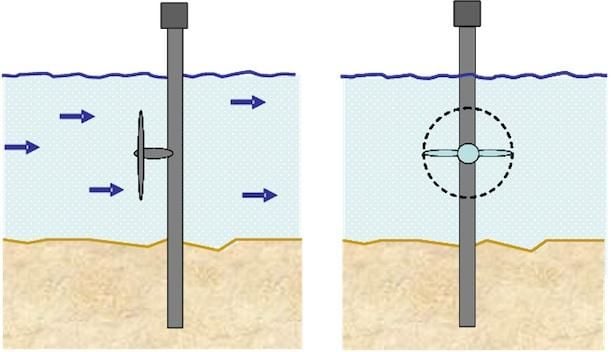Is Scotland the “Saudi Arabia” of Tidal Power?
The Pentland Firth, a seaway along Scotland’s Northern coast, could generate enough electricity to meet half of the country’s needs, new research finds
/https://tf-cmsv2-smithsonianmag-media.s3.amazonaws.com/filer/20130709050140pantland-firth-image-copy.jpg)
In extreme Northern Scotland, between the mainland and the Orkney Islands, lies the Pentland Firth, a roughly ten-mile-wide seaway between the North Sea and the Atlantic. Along with seals, porpoises and the occasional killer whale, the Firth is known for its uncommonly strong and fast tides—they’ve been recorded at speeds as high as 18 miles per hour, among the fastest in the world—the result of an enormous quantity of water rushing back and forth through a narrow passage roughly every six hours.
For centuries, these tides have been considered a hazard to sailors and fishing vessels. More recently, though, Scottish officials have pointed out that the Pentland Firth’s powerful tides could present an unexpected benefit: As countries search for new sources of renewable energy, these tides could make Scotland the “Saudi Arabia” of tidal power.
Observers have long speculated about the potential for electricity generation using tidal energy, and though there are still only a handful of tidal power plants completed worldwide, many other projects are nearing construction or have been proposed. Of these, none equals the Pentland Firth in terms of estimated power generation capacity—Scotland has suggested it could provide as much as 10 gigawatts of electricity on average over the course of a day, enough to supply a quarter of the European Union’s daily needs—and as a result, a number of energy companies have recently acquired leases to install turbines in the waterway.
Until now, though, despite the lofty predictions, no scientists had conducted a systematic study to figure out exactly how much energy the Firth might supply. Today, a group from the University of Oxford and elsewhere released the results of their review of the waterway’s total capacity.
Though their numbers might not justify comparing Scotland with the Persian Gulf in terms of overall energy potential, they do suggest that it could certainly be a Saudi Arabia for tidal power, and that the Pentland Firth could play a major role in powering the U.K. Their analysis shows that the seaway could potentially provide an average of 1.9 gigawatts of electricity at any given time, a number that equals about half of Scotland’s electrical consumption.
The analysis, published in the Proceedings of the Royal Society A, modeled the maximum potential electricity generation of a scheme that would involve three rows of underwater tidal turbines, each consisting of hundreds of posts that stretch across the entire passage. These turbines harness the energy in the passing tides in essentially the same way that wind turbines capture the energy in passing gusts of wind—by using the flow of water to spin the turbine, which turns a magnet located in the center, thereby generating an electrical field. Because water is much denser than air, though, tidal turbines will spin faster and can potentially generate much more power than wind turbines of the same size.

The researchers looked at the construction of multiple rows of these sorts of turbines, placed in a variety of locations within the Firth. Their models took into account the depth of the water at each given location, observed tidal speeds and heights over the course of each month, and a number of other variables.
Ultimately, the team found that the maximum practical capacity of 1.9 gigawatts would be possible with three rows of turbines, built in the locations mapped below (B, C, and D on the map). Because each row slows down the movement of the tides that pass through it, building more then three would only marginally improve the power capacity, while increasing the overall cost of the project at a constant rate. (A, on the map, is a proposed alternate scheme that would produce a similar level of energy but at a higher cost.)

Of course, there are numerous impediments to constructing tidal turbines on such a huge scale, which would dwarf any current tidal energy project in existence. Some are concerned that tidal turbines could have negative ecological effects, disrupting fish and other wildlife communities. Research into just how these sorts turbines would affect local ecosystems is in its beginning stages. Additionally, in areas like the Pentland Firth, turbines would have to be constructed with large enough gaps for ships to pass through, since the channel is a crucial shipping waterway, but the authors of this paper took this sort of spacing into account when making their calculations.
As of now, the biggest hurdle is price: without any carbon pollution regulation schemes in place, most renewable sources of energy, including tidal power, just aren’t as cheap as burning coal or other fossil fuels. But many energy companies have already recognized that, long-term, the cost of fossil fuel production will increase—both because of eventual regulations of the emissions of greenhouse gases and because of fossil fuels are becoming increasingly costly to extract—and harnessing the power of the tides could provide a reliable way to meet a portion of our energy demands.
/https://tf-cmsv2-smithsonianmag-media.s3.amazonaws.com/accounts/headshot/joseph-stromberg-240.jpg)
/https://tf-cmsv2-smithsonianmag-media.s3.amazonaws.com/accounts/headshot/joseph-stromberg-240.jpg)

